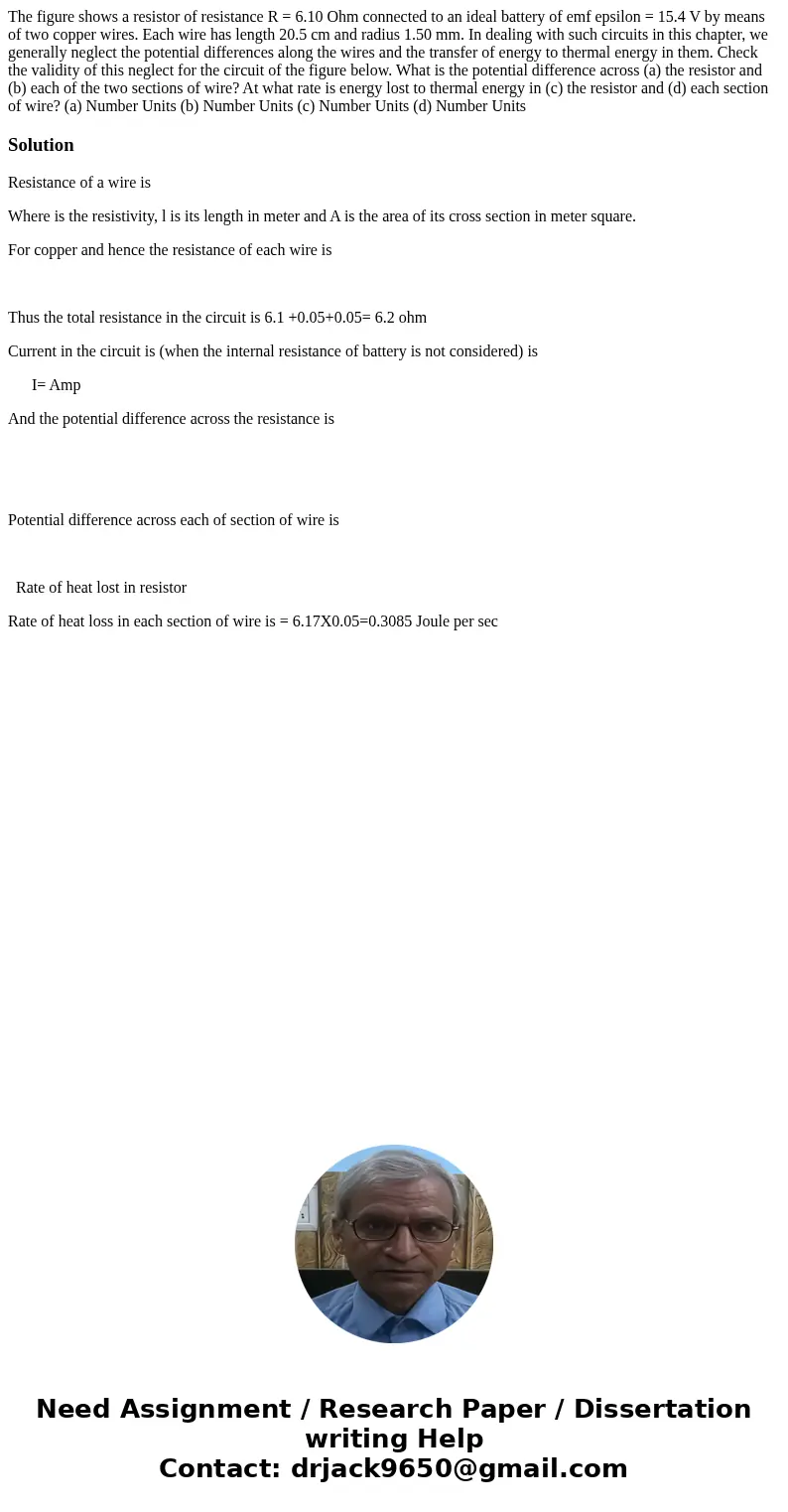The figure shows a resistor of resistance R 610 Ohm connect
The figure shows a resistor of resistance R = 6.10 Ohm connected to an ideal battery of emf epsilon = 15.4 V by means of two copper wires. Each wire has length 20.5 cm and radius 1.50 mm. In dealing with such circuits in this chapter, we generally neglect the potential differences along the wires and the transfer of energy to thermal energy in them. Check the validity of this neglect for the circuit of the figure below. What is the potential difference across (a) the resistor and (b) each of the two sections of wire? At what rate is energy lost to thermal energy in (c) the resistor and (d) each section of wire? (a) Number Units (b) Number Units (c) Number Units (d) Number Units 
Solution
Resistance of a wire is
Where is the resistivity, l is its length in meter and A is the area of its cross section in meter square.
For copper and hence the resistance of each wire is
Thus the total resistance in the circuit is 6.1 +0.05+0.05= 6.2 ohm
Current in the circuit is (when the internal resistance of battery is not considered) is
I= Amp
And the potential difference across the resistance is
Potential difference across each of section of wire is
Rate of heat lost in resistor
Rate of heat loss in each section of wire is = 6.17X0.05=0.3085 Joule per sec

 Homework Sourse
Homework Sourse